AI Pulse Weekly: Top Five AI Latest News and Advancements
Introduction
Artificial intelligence (AI) is transforming the world at an unprecedented rate, reshaping industries, job markets, and even the way we live our daily lives. In this week’s AI Pulse Weekly, we bring you the most exciting and groundbreaking advancements in the field, offering a deep dive into how AI is shaping the future of technology.
From the rise of Explainable AI (XAI), which is making AI more transparent and accountable, to OpenAI’s revolutionary O3 model, pushing the boundaries of machine learning, and Google’s latest AI breakthroughs, we cover the innovations that are set to define the next era of AI development.
In addition, we explore the potential of AI in transforming industries in India, its role in social good, and how it is dramatically reshaping the job market. We also highlight the top AI trends to watch for in 2024.
Let’s jump in and explore how these advancements are not just changing technology but redefining the future of our global landscape!
Read and Download the December 2024 Edition Now for Free Now
To read the December 2024 edition of AI Pulse Weekly, flip through our interactive PDF below. Whether you’re on your desktop or mobile device, this magazine lets you explore articles, visuals, and expert insights on the latest AI trends and ChatGPT innovations.
AI Pulse Weekly Magazine
Download the December 2024 Edition for Offline Reading
Prefer reading offline? Download the AI Pulse Weekly December 2024 Edition PDF to enjoy anytime, anywhere.
Download the PDFArticles in This Edition
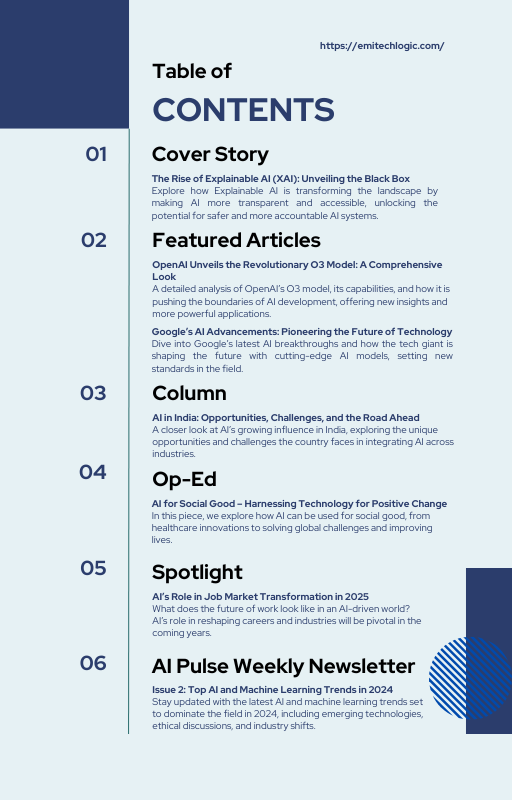
Cover Story: The Rise of Explainable AI (XAI) – Uncovering the Mystery Behind AI Decisions
AI is changing the world, but one big challenge remains: its lack of transparency. Many AI systems are often called “black boxes” because they give answers without explaining how they arrived at them. This lack of understanding can make people distrust AI, especially in important areas like finance, healthcare, and law enforcement, where decisions need to be ethical and fair.
But what if we could make AI easier to understand and more trustworthy? That’s where Explainable AI (XAI) comes in – a powerful tool that helps unlock the mystery behind AI’s decisions.
Why XAI is So Important
- Clearer Decisions: XAI helps make AI systems more transparent, so we can finally see how decisions are made. This makes it easier for both developers and users to understand.
- Building Trust: When AI can explain how it works, people are more likely to trust it. It helps show that AI is being used in a fair and ethical way.
- Accountability: With XAI, we can be sure that AI systems are making decisions that are ethical and free from bias. This is important in industries that need to be accountable for their actions, like healthcare and finance.
- Meeting Rules and Regulations: In many industries, there are strict regulations (like the GDPR in Europe) that require companies to explain how their AI systems make decisions. XAI helps businesses stay on the right side of the law.
What XAI Brings to the Table
- Better Decision-Making: XAI makes AI decisions easier to understand, so users can make more informed and smarter choices.
- User-Friendly: With clearer explanations, AI systems become more intuitive and easier to interact with, creating better experiences for users.
- Ethical AI: By ensuring AI is more accountable and fair, XAI can help create a world where AI works for everyone, not just a few.
What’s Next for XAI?
XAI is not just a trend – it’s a game-changer. The future of AI is about making systems transparent, trustworthy, and accountable. With XAI, we’re opening up new possibilities and transforming industries across the globe.
So, what does the future hold for AI in your field? The journey to understanding AI is just starting – and XAI is leading the way.
Must Read
- The 1956 Dartmouth Workshop: How a Summer Workshop Defined Artificial Intelligence
- History of AI
- Interactive Introduction to AI: Machine Learning, Neural Networks & Supervised Learning for Beginners
- Python String Comparison Tutorial: Complete Guide
- How to Build a Python Port Scanner From Scratch
Featured Article: OpenAI Launches the Revolutionary O3 Model – The Future of AI Has Arrived!
OpenAI is once again pushing the boundaries of artificial intelligence. With the introduction of its latest model, O3. This groundbreaking technology marks the beginning of a new era in machine learning, offering unprecedented performance, and making AI smarter and more adaptable across a wide range of industries.
What Makes the O3 Model Stand Out?
- Multi-Modal Understanding: Unlike previous models, the O3 doesn’t just work with text – it can also understand images, videos, and audio. This incredible multi-modal capability opens up new possibilities. Healthcare diagnostics, autonomous vehicles, and creative content generation, making O3 a game-changer for cross-domain applications.
- Advanced Self-Supervised Learning: O3 is capable of learning directly from unstructured data, which means it can tackle real-world challenges that require massive datasets. This flexibility makes it perfect for solving complex problems and adapting to the needs of different industries.
- Superior Accuracy: Using the latest deep learning techniques, O3 delivers highly accurate predictions, whether it’s forecasting market trends, recommending products, or diagnosing medical conditions. The AI model can make a difference when precision counts the most.
- Seamless Integration: Designed to integrate effortlessly with existing enterprise systems, O3 offers a scalable solution for businesses looking to enhance efficiency, boost productivity, and improve customer experiences.
Potential Applications of O3:
- Healthcare: From predicting patient outcomes to designing personalized treatment plans, O3 is transforming the healthcare industry. It could enable AI-driven diagnostics, help in managing diseases more effectively, and even assist in drug discovery.
- Finance: In the finance world, O3 is being used to optimize risk management, detect fraud, and create smarter investment strategies. It’s the tool that helps banks and investment firms make better, data-driven decisions.
- Retail and E-Commerce: For retail, O3 could enhance product recommendations, improve customer personalization, and drive sales. This means a more personalized shopping experience that keeps customers coming back for more.
The Game-Changer for AI
The launch of the O3 model marks one of the most significant milestones in the history of AI. It promises greater efficiency, accuracy, and adaptability, reshaping industries across the globe. Whether it’s healthcare, finance, or retail, O3 is set to be the revolutionary force that brings AI to the next level.
Featured: Google’s AI Advancements – Pioneering the Future of Technology
Google has consistently been at the forefront of AI innovation, and in this issue, we explore some of its groundbreaking advancements. From Gemini 2.0 to Imagen 3, Google is pushing the boundaries of what AI can achieve.
Google’s AI Projects to Watch:
| Project | Description | Impact |
|---|---|---|
| Gemini 2.0 | Enhances human-AI interaction with better context understanding. | Improves communication, making AI more human-like in interactions. |
| Trillium | Optimizes speed and efficiency of AI models. | Reduces AI response times for real-time applications in industries like autonomous vehicles. |
| Project Mariner | Revolutionizes AI search capabilities, providing smarter ways to retrieve information. | Makes AI-powered search engines more intuitive and accurate. |
| Project Astra | Focuses on improving visual search and understanding. | Allows AI to interpret images and videos with human-like precision. |
| Veo 2 | An AI tool for generating realistic video content. | Enables content creators to produce high-quality videos using AI-generated scenes. |
| Imagen 3 | Enhances image generation capabilities from textual descriptions. | Provides creatives with a tool to generate stunning visual content without needing a camera. |
Why Google’s AI Innovations Matter:
- Human-AI Collaboration: Projects like Gemini 2.0 help AI systems understand human behavior, creating a more natural way for us to interact with machines.
- Real-Time Efficiency: With Trillium, Google is ensuring that AI applications in smart cities, autonomous transportation, and real-time data analysis operate faster and more efficiently.
- Visual AI: Project Astra and Veo 2 are changing the landscape of media creation, allowing creators to design stunning visuals without technical expertise.
Google’s advancements are not just technical—they represent a step toward a future where AI is smoothly integrated into our daily lives.
Column: AI in India – Uncovering the Opportunities, Challenges, and What’s Next
India is rapidly becoming a global leader in AI development, thanks to its huge pool of talent and growing interest in using artificial intelligence across many industries, including agriculture, education, and healthcare. But what’s driving this change? Let’s take a closer look at what’s happening in India’s AI space and what lies ahead.
Exciting Opportunities for AI in India
- AI Startups: India is buzzing with innovation, with thousands of new AI startups emerging every year. These companies are working on cutting-edge solutions in areas like machine learning, data analytics, and automation, and they’re shaping the future of AI technology.
- Talent Pool: India is home to one of the largest and most skilled AI workforces in the world. With a growing number of professionals trained in data science, deep learning, and AI algorithms, India is in a strong position to lead AI development globally.
- Government Support: The Indian government is actively pushing for AI’s adoption across the country. Initiatives like the National AI Strategy and AI for All aim to integrate AI technologies into everyday life and ensure that the country benefits from its potential.
Challenges India Must Overcome
- Infrastructure Gaps: Despite rapid growth, India faces challenges when it comes to data infrastructure and access to cutting-edge computing resources. These gaps can slow down AI progress and limit the development of powerful AI systems that require large amounts of data and advanced computing power.
- Ethical Concerns: As AI becomes more widespread, there are growing concerns about its ethics. Issues such as privacy, transparency, and bias-free AI need to be carefully addressed to build trust in AI technologies. It’s crucial that AI is used in ways that are fair and accountable.
- AI Literacy: There’s a significant gap in AI education across the country. To meet the growing demand for AI professionals, India needs to create more skilled workers who can design, develop, and implement AI systems in different sectors.
The Road Ahead for AI in India
The potential for AI to transform industries in India is enormous, from improving agriculture with smart farming tools to enhancing healthcare through advanced diagnostics. However, to truly unlock AI’s power, the country must address key challenges, including infrastructure gaps, ethical concerns, and the need for greater AI literacy.
India is on the cusp of an AI revolution, and with the right investments in education, infrastructure, and ethics, the country can become a leader in the global AI landscape. The journey is just beginning – and the future is full of exciting possibilities.
Op-Ed: AI for Social Good – Using Technology to Make the World a Better Place
AI is changing the way we live and work, but it’s also making a huge difference in society. In this piece, we explore how artificial intelligence is being used for social good, helping to solve some of the world’s most urgent problems and improving lives across the globe.
AI for Social Impact – How It’s Helping
- Healthcare: AI is transforming healthcare by helping doctors diagnose diseases faster and more accurately. Whether it’s spotting cancer early or creating personalized treatment plans, AI is improving the way we treat and care for patients.
- Education: AI is helping to create personalized learning experiences, allowing students to learn at their own pace. It’s helping students from all backgrounds reach their full potential, no matter their starting point.
- Climate Change: AI is playing a key role in the fight against climate change. It can predict environmental changes, optimize the use of resources, and provide insights that help reduce the negative impact we have on the planet.
- Disaster Relief: When disasters strike, AI can predict and respond quickly, saving lives and minimizing damage. From earthquakes to floods, AI tools are being used to plan emergency responses and get help where it’s needed most.
Why This Matters
The potential of AI to address global issues and improve social well-being is truly incredible. It’s a powerful tool that can make a real difference in the world, from saving lives in healthcare to helping protect our planet from the effects of climate change.
Now is the time to use the power of AI for positive change. By using technology for social good, we can create a better future for everyone, everywhere.
Spotlight: How AI Will Transform the Job Market in 2025
The AI revolution is coming, and it’s set to reshape the global job market in big ways. By automating certain tasks and creating exciting new roles, artificial intelligence will change how we work and the skills we need. Let’s take a look at what the job market might look like in 2025:
What’s Changing in the Job Market?
- Job Displacement: AI will automate many routine and repetitive tasks, which could lead to the loss of jobs in sectors like manufacturing and customer service. But while some roles will disappear, others will thrive.
- New Job Roles: As AI technologies continue to evolve, new job roles will emerge. We’ll see positions like AI ethicists, machine learning engineers, and AI trainers become key players in the workforce, all focused on developing, managing, and improving AI systems.
- Reskilling and Upskilling: To stay competitive in this changing landscape, workers will need to focus on upskilling—learning new AI-related skills like data science, machine learning, and robotics. It’s no longer enough to have traditional skills; the future will require a strong understanding of AI.
Key Trends to Watch in 2025
- Automation of Mundane Tasks: By automating repetitive work, AI will allow human workers to focus on higher-level decision-making and more creative roles. This shift will open up new opportunities for people to use their unique skills and talents.
- AI-Assisted Decision-Making: In fields like law, education, and healthcare, AI-assisted decision-making will become more common. This means that professionals will work side-by-side with AI to make more informed and accurate decisions.
- Collaboration Between Humans and AI: The future of work isn’t about replacing humans with robots. Instead, AI and humans will collaborate, combining human creativity and empathy with AI’s speed and precision. This partnership will unlock new levels of productivity and innovation.
Why This Matters
AI is set to transform our jobs in 2025—it’s not something we can ignore. Embracing AI in the workplace means adapting to new opportunities and challenges. It’s time to get excited about what’s coming next, and ready to learn the skills that will shape the future.
AI Pulse Weekly Newsletter – Issue 2: Top AI and Machine Learning Trends in 2024
Welcome to the second issue of our AI Pulse Weekly Newsletter. This edition covers the latest AI and machine learning trends for 2024. Let’s dive into four exciting developments shaping the future of AI.
1. Multimodal AI: Enhancing Interaction and Understanding
Multimodal AI is changing how machines interact with humans. It can combine text, images, audio, and even video. This allows AI to understand and respond to multiple types of data at once. For example, a virtual assistant can now recognize speech, facial expressions, and context. This makes AI interactions feel more natural. Industries like customer service, healthcare, and education will see huge benefits from this technology.
2. Agentic AI: From Reactive Systems to Proactive Agents
Agentic AI is a leap forward from reactive AI. Traditional AI only responds to commands. But agentic AI systems can anticipate needs and make decisions independently. For example, an AI assistant could automatically schedule meetings or suggest workflow improvements. This shift towards proactive systems will make AI smarter and more autonomous.
3. Open-Source AI: Making Technology Accessible to Everyone
Open-source AI is opening up AI technology to more people. It allows developers and businesses to create, modify, and share AI tools without high costs. This is great news for small startups and large corporations alike. Open-source AI is driving innovation and making advanced AI available to everyone. With more people involved, we can expect faster advancements and more creative solutions.
4. Customized Enterprise Generative Models: AI Tailored to Your Business
In 2024, customized enterprise generative models are becoming a big deal. These models are designed for specific businesses. They create AI-powered solutions that fit each company’s unique needs. For example, a retail business might use a generative model to recommend personalized products. A bank could create models to detect fraud based on their specific transactions. These custom AI solutions will give businesses a competitive edge.
Why You Should Care
As AI and machine learning evolve, it’s important to stay updated on the latest trends. From multimodal AI to open-source technologies, these changes will shape how we work and do business. By understanding these shifts, you can stay ahead and take full advantage of AI‘s potential.
Conclusion
The future of AI is bright, with incredible advancements on the horizon that will revolutionize industries, societies, and the global economy. XAI, OpenAI’s O3, Google’s AI Projects, and AI for Social Good are just a few of the many developments that will shape the future.
AI isn’t just about technology—it’s about people. By embracing ethical AI, XAI, and investing in AI education, we can ensure that the benefits of AI are felt by all.
Stay tuned for the next edition of AI Pulse Weekly, where we continue to decode AI’s impact on our world!
External Resources
- “Explainable Artificial Intelligence (XAI) Overview” – NASA
- NASA XAI
- Summary: NASA’s official page on XAI, explaining the significance and applications in AI systems.
2. “OpenAI Unveils GPT-3 and Future of AI” – MIT Technology Review
- Link: MIT Tech Review
- Summary: An article detailing the advancements in OpenAI’s technology and its significance in AI evolution.
3. “Google AI” – Google AI Hub
- Link: Google AI Hub
- Summary: Google’s official page on AI projects, including Gemini 2.0, Project Astra, and more.
4. “AI in India: Growth, Challenges, and the Future” – NASSCOM
Summary: A report by NASSCOM on the current state of AI in India, its growth potential, and challenges.
Link: NASSCOM AI India
FAQs
What is Explainable AI (XAI) and why is it important?
XAI makes AI systems transparent and understandable, improving trust, accountability, and compliance in industries like healthcare, finance, and law enforcement.
What are the key features of OpenAI’s O3 Model?
The O3 model supports multi-modal understanding, advanced self-supervised learning, superior accuracy, and seamless integration across industries like healthcare and finance.
What AI innovations is Google currently leading?
Google is advancing projects like Gemini 2.0 for human-like AI interaction, Trillium for real-time efficiency, and Imagen 3 for stunning visual content generation.
How is AI impacting the job market in 2025?
AI is automating repetitive tasks, creating new roles like AI ethicists, and encouraging reskilling in areas like machine learning and robotics.
What role does AI play in addressing global challenges?
AI is used in healthcare for better diagnostics, education for personalized learning, climate change predictions, and disaster relief to save lives and reduce damage.

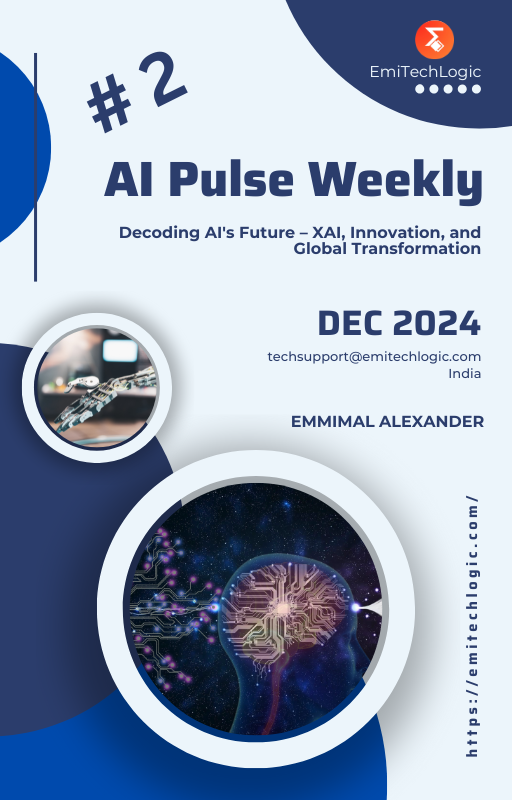
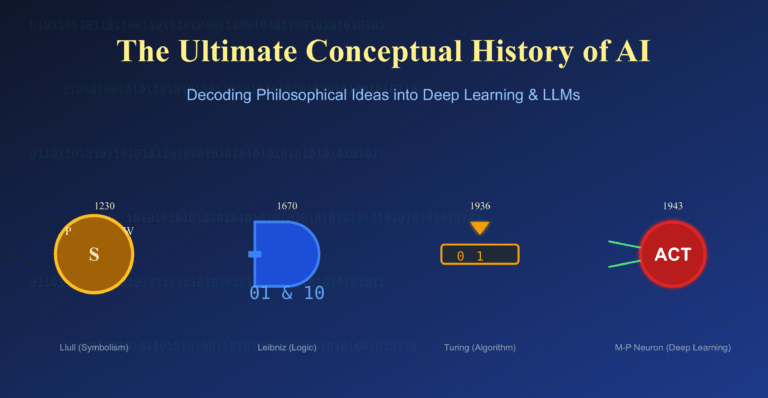

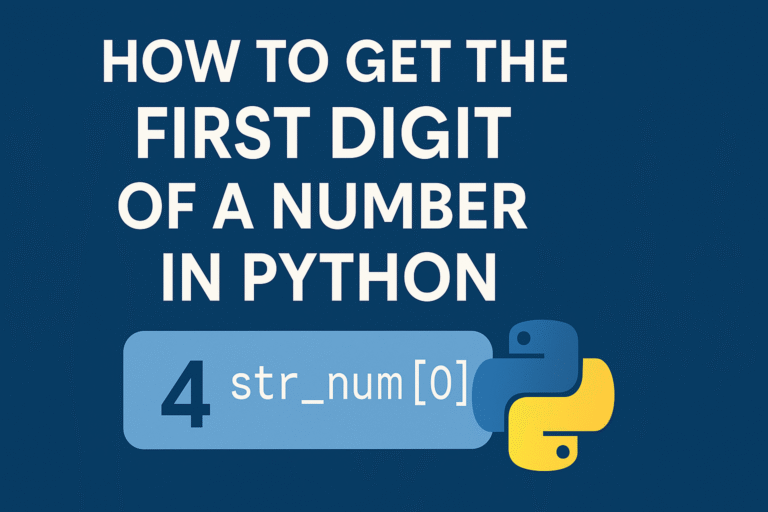

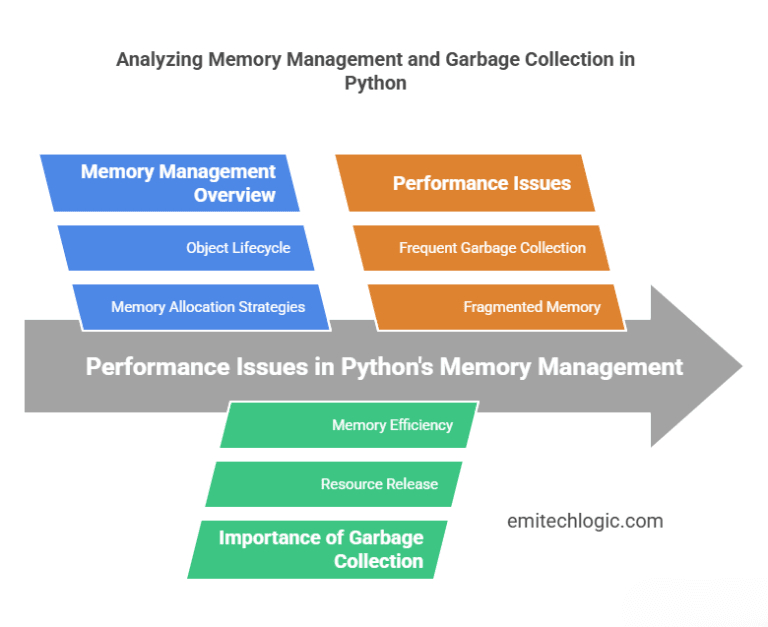

Leave a Reply